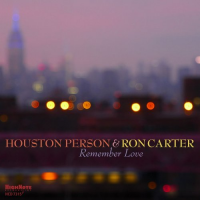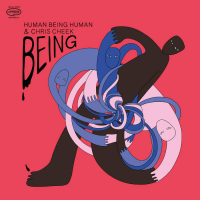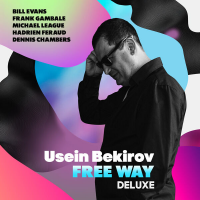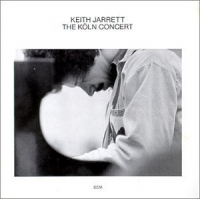Home » Jazz Articles » Album Review » Charles Mingus: Jazz In Detroit / Strata Concert Gallery...
Charles Mingus: Jazz In Detroit / Strata Concert Gallery / 46 Selden
The release of the Coltrane album was hyped as an event akin to the excavation of the Dead Sea Scrolls, and a credulous social-media community duly responded with breathless hyperbole. In truth, Both Directions At Once, which consists in large part of demos or works in progress, is worth, in critical shorthand, three-and-a-half stars rather than the five it routinely received. The 5xCD Mingus box set Jazz In Detroit / Strata Concert Gallery / 46 Selden should be rated similarly. It is a welcome addition to the archive and will be treasured by aficionados of Mingus' music. But it is not a paradigm shifter.
The provenance of Jazz In Detroit is well documented. Recorded at the city's shortlived performance space and cultural hub Strata (not to be confused with New York's Strata-East record label, a like-minded but entirely separate entity), the set chronicles the first night of a residency Mingus' quintet undertook there from 13 -18 February 1973. The performance was broadcast live on the city's not-for-profit radio station WDET FM. Tapes recorded by WDET were later left in the safe-keeping of Detroit-based band member, drummer Roy Brooks' wife, Hermione Brooks. In 2017, Hermione Brooks and her friend Barbara Cox, who with her husband Kenny Cox was the founder / director of Strata, took the tapes to Brooklyn label 180 Proof Records, who have released them in partnership with London's Barely Breaking Even label. Audio quality is acceptable. Mingus himself is under-miked and between numbers is heard asking for a foldback speaker so that he can hear himself better. But as with Duke Ellington, Mingus' primary instruments were his band and his book, so this is not a huge concern for listeners today.
The band performed for around 3 hours on the opening night, and WDET presenter Bud Spangler broadcast a twenty-minute interview with Roy Brooks during the intermission. This is included in the box set along with another half an hour or so of less interesting, but contextualising, commentary and backstage banter broadcast by Spangler between numbers and at the end of the performance. Also included are alternate takes of two tunes. These do not sound like workshop recalibrations made during the public performance, and are more likely to be from a rehearsal earlier in the day.
The lineup is not the finest Mingus ever assembled and there are no known studio recordings of it. On the plus side, Brooks was one of the greatest drummers of his era, and his own-name album, The Free Slave, recorded in 1970 and released on Muse in 1972, is a landmark in the spiritual-jazz canon. Pianist Don Pullen was similarly distinguished. He is probably best remembered for his work with percussionist Milford Graves, but on the Jazz In Detroit recordings his avant-garde proclivities are tempered with a bluesier, more downhome approach.
The two horns are less remarkable. On this outing, trumpeter Joe Gardner is a generic rather than singular hard-bop player; he came into his own a few years later while working with bassist Cecil McBee. Tenor saxophonist John Stubblefield would become a mainstay of the posthumous Mingus Big Band, but in 1973 did not rank among the galvanising saxophonists Mingus typically employed.
The interview with Brooks is an important addition to the wider jazz archive. Spangler's knowledge of contemporary jazz was patchy—when Brooks mentions Muse, Spangler says "What's that?"—but twenty minutes of the still largely uncelebrated Brooks fielding even entry-level questions is to be treasured. Other key tracks are the pretty, waltz-time ballad "Dizzy Profile," which exists nowhere else in Mingus' discography, and "Noddin' Ya Head Blues," which was first released on Three Or Four Shades Of Blues (Atlantic, 1977) in an arrangement for a much larger ensemble. Gardner, Stubblefied and Pullen solo on both tunes, and Mingus and Brooks do so on "Noddin.'" Brooks' solo includes an extended, brilliantly vocalised passage on musical saw. His equally compelling but briefer solo on an earlier track, "Peggy's Blue Skylight," features his home-made gizmo the breathatone, which alters the pitch of a drum it is applied to, and which Brooks developed after an idea given to him by Yusef Lateef.
Generally speaking, Mingus' most fulfilling albums were made with expanded lineups, where his compositional brilliance was mirrored by the richer instrumental palette to hand. A notable exception to that generalisation is Charles Mingus Presents Charles Mingus (Candid, 1960), made with a stellar quartet comprising reed player Eric Dolphy, trumpeter Ted Curson and drummer Dannie Richmond. But the 1973 Detroit frontline is not in the same league.
Jazz In Detroit is nonetheless an important release, chronicling as it does another day in the life of one of twentieth century jazz's true geniuses.
Track Listing
CD1: Pithecanthropus Erectus; The Man Who Never Sleeps; Peggy’s Blue Skylight. CD2: Introduction by Bud Spangler / Celia; Bud Spangler interview with Roy Brooks and commentary. CD3: C Jam Blues; Orange Was The Color Of Her Dress, Then Blue Silk; Dizzy Profile. CD4: Noddin’ Ya Head Blues; Celia (alternate take). CD5: Dizzy Profile (alternate take); Strata Gallery Announcement by Bud Spangler.
Personnel
Charles Mingus
bass, acousticCharles Mingus: bass; Roy Brooks: drums, musical saw; John Stubblefield: tenor saxophone; Joe Gardner: trumpet; Don Pullen: piano.
Album information
Title: Jazz In Detroit / Strata Concert Gallery / 46 Selden | Year Released: 2018 | Record Label: BBE Records
Tags
PREVIOUS / NEXT
Support All About Jazz
 All About Jazz has been a pillar of jazz since 1995, championing it as an art form and, more importantly, supporting the musicians who make it. Our enduring commitment has made "AAJ" one of the most culturally important websites of its kind, read by hundreds of thousands of fans, musicians and industry figures every month.
All About Jazz has been a pillar of jazz since 1995, championing it as an art form and, more importantly, supporting the musicians who make it. Our enduring commitment has made "AAJ" one of the most culturally important websites of its kind, read by hundreds of thousands of fans, musicians and industry figures every month.






















